
Cactus Around Las Vegas, Vegetation Around Las Vegas
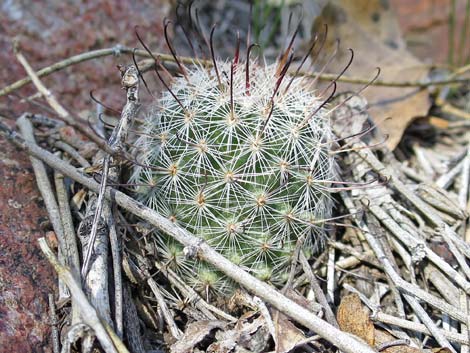 |
General: Graham's Nipple Cactus (Cochemiea grahamii) is a small, solitary or clumped, mound-shaped to somewhat elongate cactus with short, thin white spines that nearly cover the plant plus long, darker, fish-hook shaped spines that stand out from the body of the plant. In early summer, pink flowers emerge from the side of the stem. Fruits become ripe during fall and winter. Graham's Nipple Cactus are an inconspicuous, but interesting member of vegetation communities that can be found on dry, well-drained gravelly and rocky flats, bajadas, oak woodlands, chaparral shrublands, on flat to moderate slopes in the lower mountains in the Lower Sonoran (Creosote-Bursage Flats) and Upper Sonoran (Mojave Desert Scrub and Pinyon-Juniper Woodland) life zone, but not in Nevada. Around Las Vegas, look for this species in the bottom of the Grand Canyon or in Mojave National Preserve. Family: Cactus (Cactaceae). Other Names: Fish-hook cactus, nipple cactus, formerly Mammillaria grahamii. |
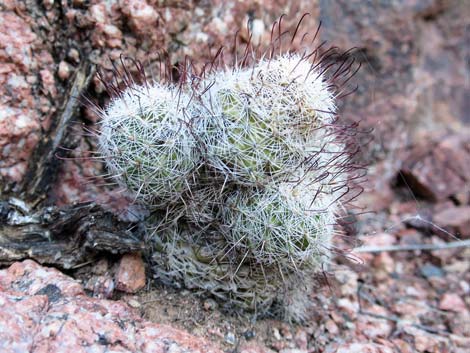 |
Plant Form: Short, solitary, unbranched, rounded stem to clump of such stems that emerge from the ground. Height: Usually 4-5 inches tall, 2 inches in diameter (to 10 inches tall and 3 inches in diameter). Trunk: None. Stems: Single to clumped, upright, short-cylindrical to elongate-cylindrical (nipple shaped when small). Stem Surface: Ribbed, but inconspicuous under the radial spines. Spines: Central: 3 to 4 per ariole, to 1 inch long, generally hooked with dark tips. Radial: many (20-30 per ariole), shorter than central spines, mostly white. Glochids: Absent. |
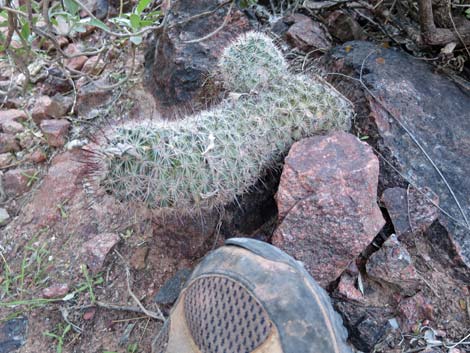 |
Leaves: None. Flowers: Blooms in early summer. Flower about 1 inch across; light pink. Fruit: Cylindrical, about 1/2 to 1 inch long, red when ripe. Seeds: Small, black. Habitat: Variety of habitats from rocky bajadas and desert peaks to chaparral and oak woodlands. Distribution: Southern California to southern Texas and south into northern Mexico, but not Nevada. Elevation: Near sea level to about 4,000 ft. Comments: Around Las Vegas, look for this species in the bottom of the Grand Canyon or in Mojave National Preserve. |
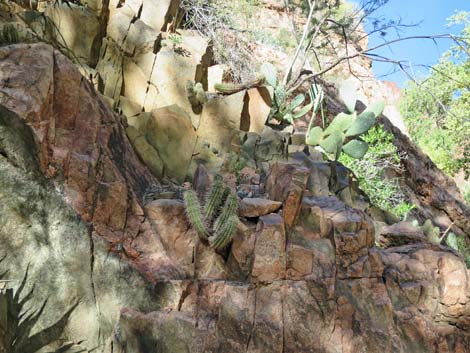 |
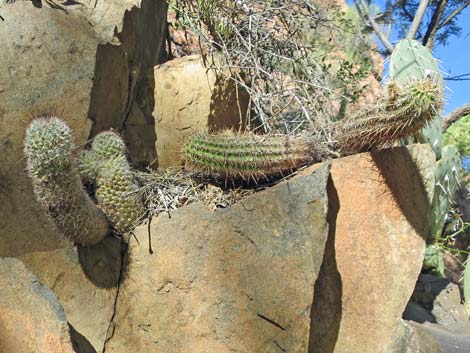 |
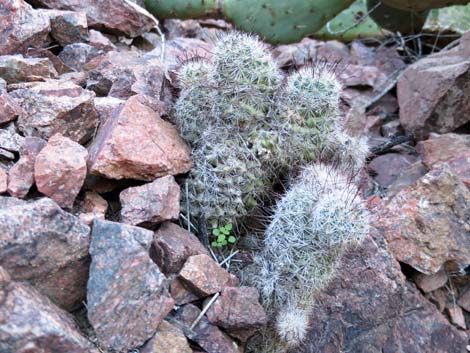 |
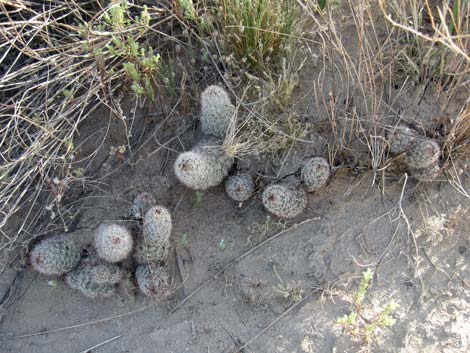 |
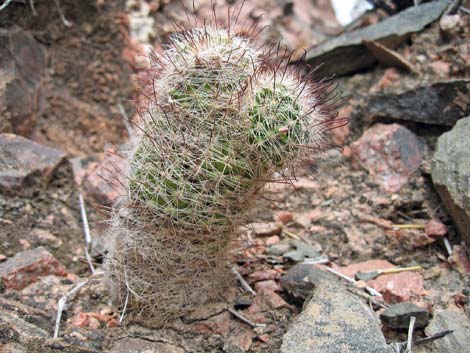 |
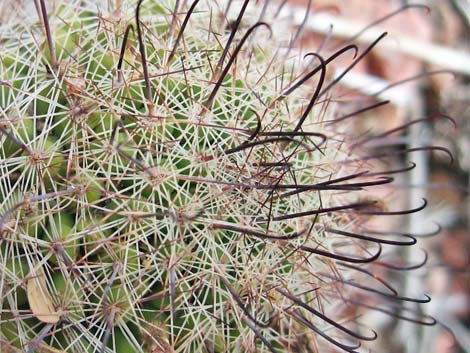 |
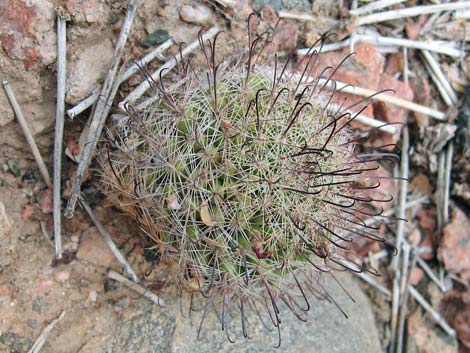 Long central spines with hooked ends |
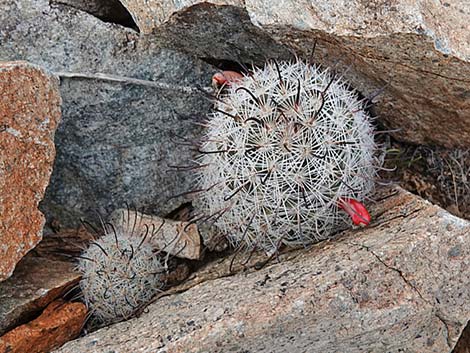 Ripe fruits are red |
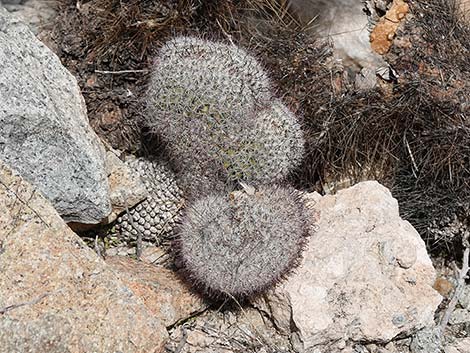 Unusual growth form |
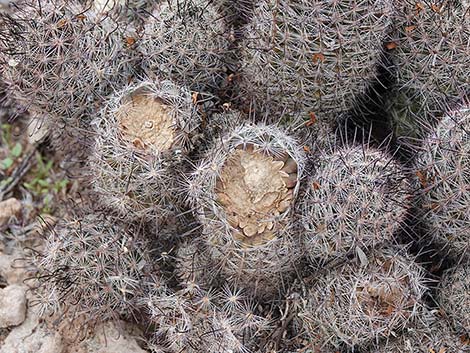 Even the hooked spines don't always save them from thirsty rabbits |
Note: All distances, elevations, and other facts are approximate. Names generally follow the
USDA database.
![]() ; Last updated 240615
; Last updated 240615
| All Cactus | Plant Species Index | Glossary | Copyright, Conditions, Disclaimer | Home |